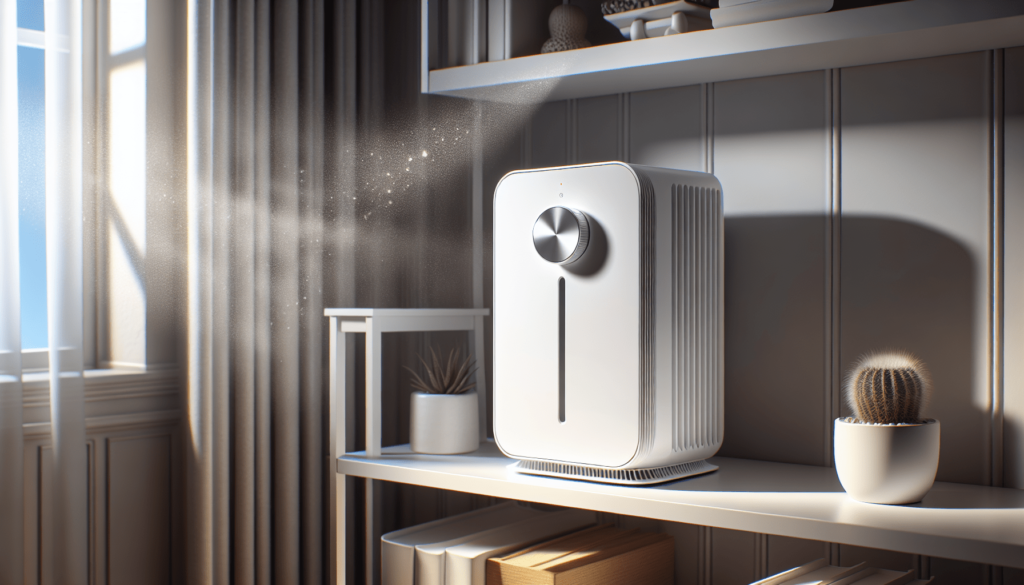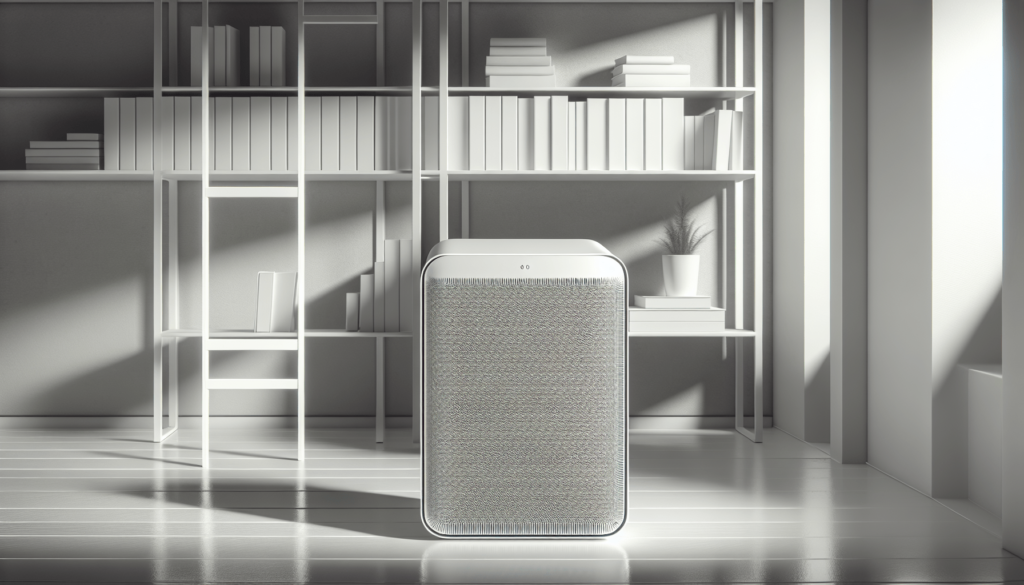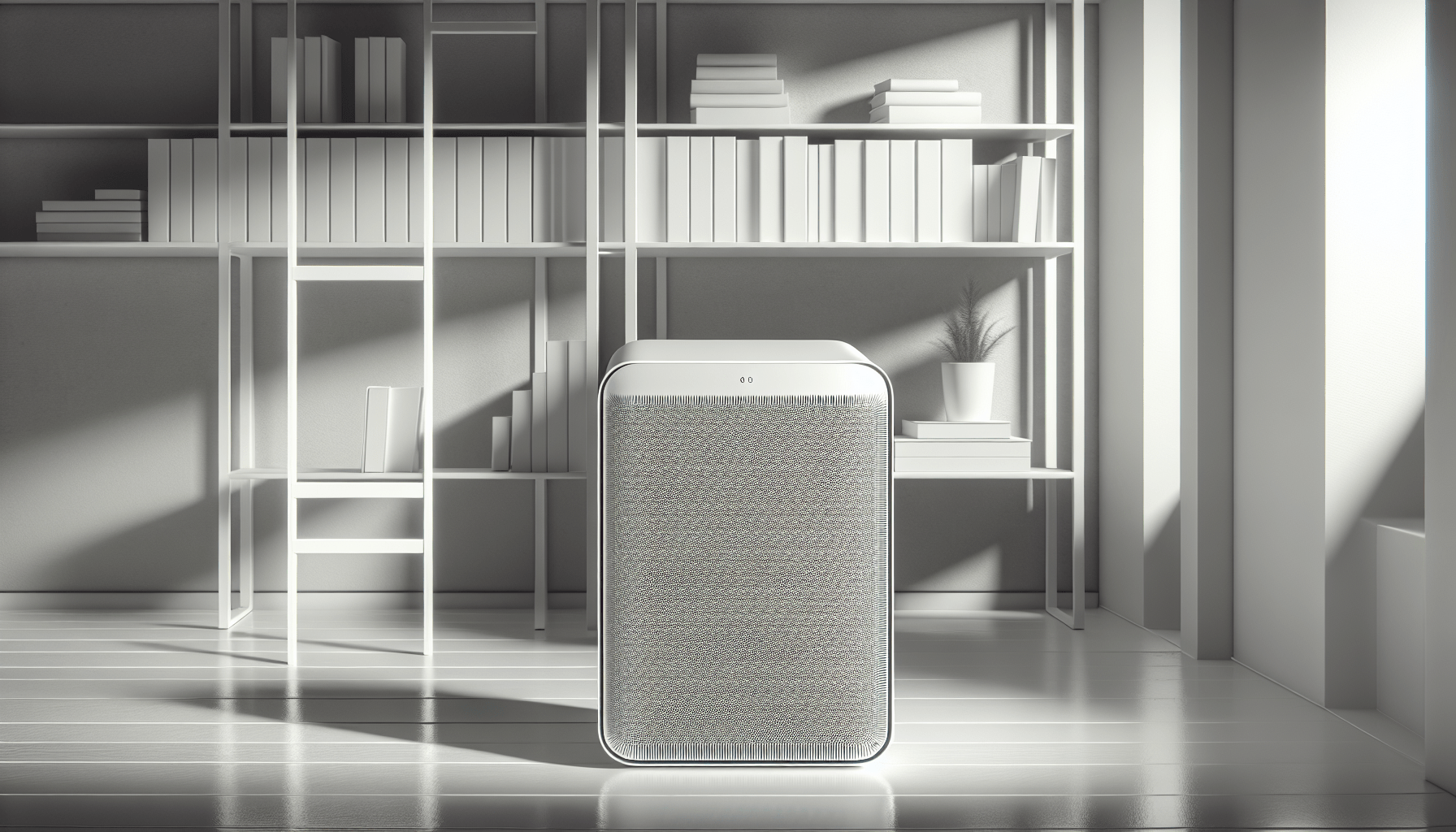If you’ve recently invested in an air purifier, you may be wondering just how frequently you should run it to reap the maximum benefits. From eliminating allergens to improving indoor air quality, your air purifier can be a powerful tool in creating a healthy living environment. In this article, we’ll explore the optimal usage of air purifiers and provide practical tips on how often you should run yours. So, sit back, relax, and let’s uncover the secrets to cleaner air in your home.
Factors to Consider
Size of the Room
When determining how often to run your air purifier, the size of the room should be one of the primary factors to consider. A larger room may require the air purifier to be used more frequently or for longer periods to effectively clean the air. On the other hand, a smaller room may not need the same intensity of air purification. By evaluating the size of the room, you can better gauge the frequency and duration of air purifier usage.
Level of Air Pollution
The level of air pollution in your environment is another crucial factor to consider when deciding how often to run your air purifier. Different areas have varying degrees of air pollution, ranging from mild to high. If you reside in an area with mild air pollution, running the air purifier for a few hours each day may be sufficient. However, for areas with moderate to high air pollution, you may need to run the air purifier continuously or for more extended periods to maintain clean and fresh air.
Allergies or Respiratory Conditions
If you or someone in your household suffers from allergies or respiratory conditions such as asthma, it’s essential to take this into account when determining the frequency of air purifier usage. For individuals with allergies or respiratory conditions, running the air purifier continuously or throughout the night can provide much-needed relief by reducing airborne allergens and irritants. Additionally, investing in an air purifier with a High-Efficiency Particulate Air (HEPA) filter can help capture and remove even the smallest particles, further improving indoor air quality.
Presence of Pets
If you have pets in your home, their presence can significantly impact the air quality. Pet dander, fur, and odors can circulate in the air and cause allergies or discomfort. To mitigate these issues, running the air purifier continuously can help filter out pet-related allergens and odors. Regular cleaning and maintenance of the air purifier, along with timely filter replacements, are also essential to ensure optimal performance in pet-inhabited spaces.
Cooking or Smoking Habits
If you frequently cook or smoke indoors, it’s vital to consider the impact of these habits on indoor air quality. Cooking activities can release airborne particles and odors that may affect your health and comfort. Similarly, smoking indoors can introduce harmful chemicals and secondhand smoke into the air. To address these concerns, it is advisable to increase the usage of your air purifier during and after cooking or smoking. Additionally, monitoring the filter replacement frequency is crucial as these activities can lead to faster filter saturation.
General Guideline
Continuous Operation
Running the air purifier continuously can offer several benefits, especially if you live in an environment with consistently poor air quality. Continuous operation ensures a continuous flow of clean air, helping to reduce the concentration of airborne pollutants. This can be particularly beneficial for individuals with allergies, respiratory conditions, or sensitivities to air pollution. However, it’s important to keep in mind the energy consumption and filter lifespan implications of running the air purifier continuously.
Night Time Operation
Using the air purifier during nighttime can be particularly advantageous, especially if you spend a significant amount of time in your bedroom. Running the air purifier while you sleep allows for continuous air purification throughout the night, ensuring that you wake up to clean and fresh air. Be mindful of the noise level generated by the air purifier, as some models may be quieter than others. Evaluating the noise level and your personal preferences will help determine if night time operation is suitable for you.
As Needed Basis
In some situations, running the air purifier on an as-needed basis may be sufficient. If you live in an area with relatively clean air or have minimal indoor pollutants, sporadic use of the air purifier may be appropriate. This can help conserve energy and prolong the lifespan of the air purifier filters. However, it’s important to monitor the air quality periodically and adjust the usage accordingly if pollution levels increase or specific events occur that could affect indoor air quality.
Manufacturer Recommendations
To ensure the optimal performance and lifespan of your air purifier, it’s essential to refer to the manufacturer’s recommendations. Consult the user manual provided by the manufacturer for specific guidelines on operation, maintenance, and filter replacements. Different air purifier models may have varying requirements, so familiarizing yourself with the manufacturer’s recommendations will help you make informed decisions about the frequency and duration of air purifier usage.

Size of the Room
Determining the Room Size
Before deciding on the frequency of air purifier usage, accurately determining the size of the room is crucial. Measure the length and width of the room and multiply the two values together to calculate the square footage. This measurement will serve as a reference when evaluating the air purifier’s coverage area and determining the appropriate air purifier size for your room.
Air Purifier Coverage Area
Each air purifier has a specified coverage area, which indicates the maximum square footage it can effectively clean. When selecting an air purifier, ensure that the coverage area aligns with or slightly exceeds the size of the room. If the air purifier’s coverage area is less than the room size, it may need to be operated more frequently or for longer periods to achieve adequate air purification.
Calculating Air Changes per Hour
To determine the ideal frequency of air purifier operation, consider calculating the desired number of air changes per hour (ACH) for your room. Air changes per hour refer to the number of times the entire volume of air in a room is replaced within a specific time frame. ACH can vary depending on factors such as room size, air pollution levels, and individual needs. Generally, 4 to 6 ACH is recommended for optimal air quality. By multiplying the room’s cubic volume by the desired ACH and dividing it by 60 minutes, you can obtain the recommended air purifier runtime per hour.
Level of Air Pollution
Mild Air Pollution
Areas with mild air pollution may experience occasional dust, pollen, or other airborne particles that can impact indoor air quality. In such cases, running the air purifier for a few hours each day can help combat these pollutants effectively. Consider operating the air purifier in shorter bursts throughout the day to maintain clean air and minimize energy consumption.
Moderate Air Pollution
If you reside in an area with moderate air pollution, which may include pollutants from vehicles, industrial sites, or nearby construction, the air purifier may need to be run for more extended periods each day. It is recommended to operate the air purifier continuously or for a significant portion of the day to ensure consistent air purification in the face of higher pollutant levels.
High Air Pollution
Areas with high air pollution, such as densely populated cities or regions near pollutant sources, require diligent air purification efforts. To combat the elevated levels of pollutants, running the air purifier continuously becomes crucial. Continuous operation helps maintain a healthier indoor environment by constantly filtering out harmful particles and minimizing their concentration in the air you breathe.

Allergies or Respiratory Conditions
Constant Operation
For individuals with allergies or respiratory conditions, such as asthma, keeping the air purifier running continuously can provide substantial relief. Continuous operation ensures a continuous reduction in allergens and irritants in the air, promoting a healthier indoor environment. By consistently purifying the air, respiratory symptoms may be alleviated, and the frequency of asthma attacks or allergic reactions can be reduced.
Night Time Operation
If allergies or respiratory conditions tend to worsen during nighttime or if you spend a significant amount of time in your bedroom, utilizing the air purifier while you sleep can be highly beneficial. Night time operation helps create an allergen-free sleep environment, reducing the likelihood of nighttime symptoms and promoting better sleep quality.
Investing in a High-Efficiency Particulate Air (HEPA) Filter
For individuals with allergies or respiratory conditions, investing in an air purifier with a High-Efficiency Particulate Air (HEPA) filter is highly recommended. HEPA filters have the ability to capture and trap ultrafine particles, including pollen, dust mites, pet dander, and mold spores. By removing these allergens from the air, HEPA filters can significantly improve indoor air quality and provide relief for allergy and asthma sufferers.
Monitoring Air Quality
Regularly monitoring the air quality in your home can help gauge the effectiveness of your air purifier and determine the appropriate usage. Consider using an air quality monitor to assess the levels of pollutants and allergens in your indoor environment. By being aware of the air quality, you can make informed decisions about when to run your air purifier and for how long.
Presence of Pets
Continuous Operation
If you have pets in your home, running the air purifier continuously is recommended to combat pet-related allergens and odors. Pet dander, fur, and odors can linger in the air, causing discomfort and allergic reactions. Continuous operation of the air purifier ensures that these particles are continuously filtered out, resulting in cleaner and fresher air.
Cleaning and Maintenance
When pets are present, regular cleaning and maintenance of the air purifier are essential to ensure optimal performance. Pet hair or pet dander can accumulate on the air purifier’s intake grill or filters, hindering its efficiency. Regularly vacuuming or wiping down the intake grill and following the manufacturer’s cleaning instructions will help keep the air purifier functioning effectively.
Regular Filter Replacement
Pets can also contribute to faster filter saturation due to the increased airborne particles they generate. It is crucial to monitor the filter’s condition and replace it regularly. Refer to the manufacturer’s recommendations for filter replacement intervals and consider replacing the filters more frequently if you have pets. This will help maintain the air purifier’s effectiveness in removing pet-related allergens, odors, and other airborne particles.
Cooking or Smoking Habits
Increased Air Purifier Usage
If you frequently cook or smoke indoors, it’s essential to increase the usage of your air purifier during and after these activities. Cooking activities can release airborne particles, including smoke, cooking odors, and grease particles, which can affect indoor air quality. Running the air purifier during cooking and for some time afterward can help capture and eliminate these particles, resulting in cleaner air.
Filter Replacement Frequency
Cooking and smoking indoors can lead to faster filter saturation due to the increased introduction of particles and odors. Check the air purifier’s filter regularly, and if it appears clogged or discolored, consider replacing it sooner than the manufacturer’s recommended interval. Keeping the filters clean and replacing them when needed ensures optimal air purification and prevents the air purifier from being overwhelmed by the increased pollutant load.
Timed Operation during Cooking/Smoking
To maximize the effectiveness of your air purifier during cooking and smoking, consider setting a timer to operate the air purifier for a specific duration. This timed operation can help remove airborne particles and odors generated during the activities. Adjust the timer duration based on the intensity of the cooking or smoking, as well as the size of the room, to customize the air purification process for optimal results.
Continuous Operation
Benefits
Running the air purifier continuously offers several benefits, primarily in environments with consistent or high air pollution levels. Continuous operation ensures a constant supply of clean and fresh air, helping to maintain a healthier indoor environment. It minimizes the concentration of airborne pollutants, reduces allergens, and mitigates the potential negative health impacts associated with prolonged exposure to polluted air.
Energy Consumption
One consideration to keep in mind when running the air purifier continuously is energy consumption. Continuous operation utilizes more energy compared to intermittent usage. However, with advancements in energy-efficient air purifier models, the difference in energy consumption between continuous and intermittent operation has significantly decreased. Choosing an energy-efficient air purifier and adjusting the fan speed settings can help optimize energy usage while still maintaining effective air purification.
Filter Lifespan
Running the air purifier continuously can impact the lifespan of the filters. Continuous operation exposes the filters to a higher volume of pollutants, leading to a faster accumulation of particles and potential clogging. Regularly monitoring the filter’s condition and replacing it according to the manufacturer’s recommendations is essential to maintain the air purifier’s efficiency. By following proper filter maintenance and replacement practices, you can ensure that the air purifier continues to provide effective air purification for an extended period.
Night Time Operation
Advantages
Night time operation of the air purifier provides several advantages, especially for individuals who prioritize a clean sleep environment. During sleep, the body undergoes processes of repair and rejuvenation, making it crucial to breathe in clean and fresh air. Running the air purifier throughout the night ensures continuous air purification, reducing the concentration of allergens, pollutants, and odors in the bedroom. This can lead to improved sleep quality, reduced nighttime symptoms for allergy or asthma sufferers, and overall better respiratory health.
Noise Level
While using the air purifier during sleep can be beneficial, it’s important to consider the noise level it generates. Some air purifiers can produce noise, which may disrupt sleep or cause discomfort for light sleepers. When selecting an air purifier for night time operation, opt for models specifically designed to operate quietly or include a low-noise or sleep mode. These features help minimize noise levels, allowing for undisturbed sleep while still maintaining clean and fresh air.
Bedroom Air Quality
The bedroom is a space where individuals typically spend a significant amount of time, making it crucial to ensure optimal air quality. Running the air purifier during the night in the bedroom helps create an environment free from allergens, pollutants, and odors while you sleep. By continually filtering the air, the air purifier improves the quality of the air you breathe, reducing the risk of respiratory symptoms, allergies, or discomfort during your most restorative hours.
Manufacturer Recommendations
Consulting the User Manual
When it comes to operating your air purifier, consulting the user manual provided by the manufacturer is essential. The user manual contains specific guidelines tailored to your air purifier model, including information on optimal operation. Familiarize yourself with the instructions, as they will provide valuable insights on recommended usage patterns, optimal cleaning practices, and filter replacement intervals. By following the manufacturer’s guidelines, you ensure the proper functioning and longevity of your air purifier.
Following Suggested Usage
Manufacturers often provide suggested usage guidelines based on their product’s performance capabilities and features. These guidelines may suggest specific durations or frequencies of air purifier operation, depending on factors such as room size, air pollution levels, or intended use. Following the manufacturer’s suggested usage can help you make informed decisions about when and how often to run your air purifier, maximizing its effectiveness in improving indoor air quality.
Specific Models’ Requirements
Different air purifier models may have unique requirements or recommendations for operation. Factors such as the type of filters used, available fan speed settings, or additional features can impact the ideal usage pattern. Refer to the specific requirements outlined by the manufacturer for your air purifier model. These specifications will help you optimize the air purifier’s performance, extend the lifespan of the filters, and ensure consistent air purification in your indoor environment.
In conclusion, how often you should run your air purifier depends on various factors, including the size of the room, level of air pollution, allergies or respiratory conditions, presence of pets, and cooking or smoking habits. By considering these factors and guidelines such as continuous operation, night time operation, as-needed basis usage, and manufacturer recommendations, you can determine a usage pattern that suits your specific needs. Regular maintenance and timely filter replacements are also crucial to maximize the effectiveness and lifespan of your air purifier. With proper usage, your air purifier can create a healthier and more comfortable indoor environment, promoting your well-being and ensuring clean air for you and your loved ones.

